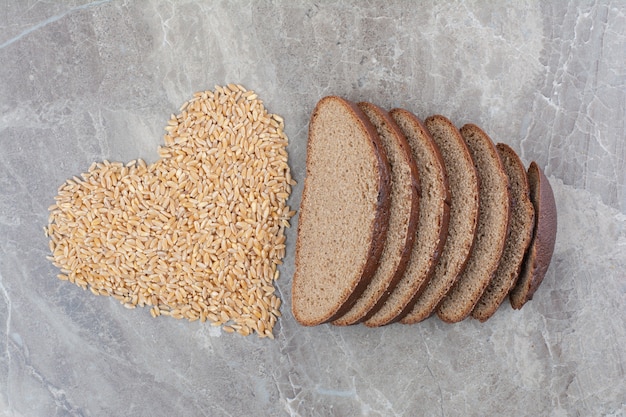Understand the Glycemic Index: Control Your Blood Sugar Now!

The Glycemic Index (GI) is a ranking system for carbohydrates based on their immediate effect on blood glucose (sugar) levels, helping individuals manage their blood sugar through informed food choices and dietary habits.
Understanding how foods affect your blood sugar is crucial for maintaining overall health. The glycemic index and how can it help you control your blood sugar levels is a key concept in nutrition, especially for those managing diabetes or aiming for stable energy levels throughout the day.
What is the Glycemic Index (GI)?
The glycemic index (GI) is a rating system that measures how quickly a food raises blood sugar levels after it’s eaten. It assigns a number to foods, ranging from 0 to 100, based on how much and how quickly they raise your blood sugar compared to a standard reference food, usually pure glucose or white bread.
Understanding the GI can help you make informed food choices, especially if you’re managing diabetes or trying to maintain stable blood sugar levels and energy throughout the day.
How the Glycemic Index Works
The GI scale categorizes foods into three main groups:
- Low GI: Foods with a GI of 55 or less. These foods are digested and absorbed more slowly, resulting in a gradual rise in blood sugar levels.
- Medium GI: Foods with a GI between 56 and 69. These foods have a moderate impact on blood sugar levels.
- High GI: Foods with a GI of 70 or more. These foods are quickly digested and absorbed, leading to a rapid spike in blood sugar levels.
It’s important to note that the GI is not the only factor to consider when evaluating a food’s impact on blood sugar. The portion size and the presence of other nutrients, such as fat and fiber, can also influence how a food affects your blood sugar levels.
In conclusion, the Glycemic Index provides a useful tool to understand how food affects blood sugar levels, allowing for better food choices, especially for those managing diabetes or aiming to achieve stable energy levels.
Factors Affecting a Food’s Glycemic Index
While the glycemic index (GI) provides a general guideline for how foods affect blood sugar levels, several factors can influence a food’s GI value. Understanding these factors can help you interpret the GI more accurately and make more informed dietary choices.
These factors include the type of carbohydrate, the processing method, ripeness, and the presence of other nutrients. Let’s explore them in detail.

Type of Carbohydrate
The type of carbohydrate in a food plays a significant role in determining its GI. Simple sugars like glucose and fructose tend to have higher GI values because they are easily broken down and absorbed into the bloodstream.
On the other hand, complex carbohydrates like starch and fiber are digested more slowly, resulting in a lower GI.
Processing Method
The way a food is processed can also affect its GI. Highly processed foods, such as white bread and refined cereals, tend to have higher GI values because they have been stripped of their fiber and nutrients.
Conversely, minimally processed foods, such as whole grains and legumes, retain their fiber content and have lower GI values.
In conclusion, a variety of factors can impact a food’s Glycemic Index, ranging from the type of carbohydrate itself to the processing techniques involved in its preparation.
Benefits of Following a Low Glycemic Index Diet
Adopting a low glycemic index (GI) diet can offer a multitude of health benefits, particularly for individuals managing diabetes or those seeking to improve their overall well-being. A low GI diet focuses on consuming foods that cause a slow and steady rise in blood sugar levels, which can lead to more stable energy, better weight management, and improved heart health.
Let’s delve into some of the key advantages of following a low GI diet and how it can positively impact your health.
Improved Blood Sugar Control
One of the primary benefits of a low GI diet is its ability to improve blood sugar control. By consuming foods that release glucose slowly, you can prevent rapid spikes and crashes in blood sugar levels. This is particularly beneficial for individuals with diabetes, as it can help them manage their condition more effectively.
- Helps prevent hyperglycemia (high blood sugar)
- Reduces the risk of hypoglycemia (low blood sugar)
- Improves insulin sensitivity
Weight Management
A low GI diet can also aid in weight management. Foods with a lower GI tend to be more filling and can help you feel satisfied for longer, reducing the likelihood of overeating.
- Promotes satiety and reduces hunger cravings
- Supports healthy weight loss or maintenance
- Helps regulate appetite hormones
In summary, following a low Glycemic Index diet can offer several advantages, including better blood sugar control for diabetics and improved weight management. It encourages mindful eating habits, focusing on foods that promote a more gradual and sustainable release of energy.
Foods with High, Medium, and Low Glycemic Index
Knowing which foods fall into the high, medium, and low glycemic index (GI) categories is essential for making informed dietary choices. This knowledge can assist you in managing blood sugar levels, particularly if you have diabetes, or if you’re aiming for stable energy levels throughout the day.
Here’s a comprehensive overview of foods in each GI category to help you navigate your dietary choices effectively.

High Glycemic Index Foods (GI 70 or More)
High GI foods are rapidly digested and absorbed, leading to a quick spike in blood sugar levels.
- White bread
- White rice
- Potatoes
- Sugary cereals
- Watermelon
Medium Glycemic Index Foods (GI 56-69)
Medium GI foods have a moderate impact on blood sugar levels.
- Whole wheat bread
- Brown rice
- Oatmeal
- Sweet potatoes
- Bananas
In conclusion, understanding how to categorize foods into High, Medium, and Low Glycemic Index groups allows for tailored dietary choices that support overall health goals, promoting more stable blood sugar levels and optimized energy management.
Practical Tips for Incorporating the Glycemic Index into Your Diet
Incorporating the glycemic index (GI) into your diet doesn’t have to be complicated. By following a few practical tips, you can easily make more informed food choices that promote stable blood sugar levels and overall health whether you’re managing diabetes or not.
Simple strategies include choosing lower GI alternatives, combining high GI foods with protein, and being mindful of portion sizes.
Choose Lower GI Alternatives
Whenever possible, opt for lower GI alternatives to your favorite foods. For example, instead of white bread, choose whole grain bread. Instead of white rice, choose brown rice. These simple swaps can significantly reduce the impact of your meals on your blood sugar levels.
Combine High GI Foods with Protein and Healthy Fats
If you do choose to eat high GI foods, pair them with protein and healthy fats. Protein and fat slow down the digestion and absorption of carbohydrates, which can help to mitigate the spike in blood sugar levels.
For instance, if you’re eating a potato, consider topping it with some grilled chicken and avocado rather than just butter.
In conclusion, it doesn’t have to be hard to incorporate the Glycemic Index into your diet. Choosing lower GI alternatives, combining high GI foods with protein and healthy fats, and being mindful of portion sizes are all easy ways to have a positive effect on your health.
Limitations of the Glycemic Index
While the glycemic index (GI) can be a valuable tool for managing blood sugar levels, it’s important to be aware of its limitations. The GI does not tell the whole story about how a food will impact your blood sugar, because it doesn’t account for portion size or the presence of other nutrients. Furthermore, individual responses to foods can vary.
One of the main limitations of the GI is that it measures the impact of a food on blood sugar levels when eaten in isolation. In reality, we typically consume foods in combination, which can alter their overall effect on blood sugar.
- GI doesn’t account for portion size
- Individual responses vary
- GI values can be inconsistent
In conclusion, it’s important to be aware of the limitations of the Glycemic Index when using it to make dietary choices. Considering the GI in conjunction with other factors, such as portion size, nutritional content, and individual response, can provide a broader and more accurate picture.
| Key Point | Brief Description |
|---|---|
| 📊 Understanding GI | Measures how quickly foods raise blood sugar levels. |
| 🍎 Low GI Benefits | Improves blood sugar control, aids weight management. |
| 🥗 Food Choices | Opt for low over high GI foods for stability. |
| ⚠️ Limitations | Doesn’t account for portion size or individual variation. |
Frequently Asked Questions (FAQs)
▼
No, the glycemic index (GI) measures how quickly a food raises blood sugar, while glycemic load (GL) considers both the GI and the portion size.
▼
The glycemic index can vary depending on factors such as ripeness, processing, and cooking methods, so it should be used as a general guide.
▼
While the glycemic index can be a useful tool for various people, individuals with diabetes may find it particularly beneficial in managing their blood sugar levels.
▼
No, it’s important to consider other factors such as portion size, nutrient content, and overall dietary balance when making food choices.
▼
You can find reliable glycemic index information from reputable sources such as scientific studies, nutrition databases, and healthcare professionals.
Conclusion
Understanding what is the glycemic index and how can it help you control your blood sugar levels is a valuable tool for managing your health, especially if you’re living with diabetes or simply want to maintain stable energy levels. By making informed food choices based on the GI and considering other factors such as portion size and nutrient content, you can develop a diet that supports your overall well-being.
